Leeds & Catlin Records: The Leeds & Catlin Labels
Aretino —Produced for the Aretino Company (Chicago), an Arthur J. O’Neill venture controlled by the O’Neill-James Company, which marketed Busy Bee. O’Neill was a master of the tied-product scheme (once known popularly as the “razor-and-blade ploy”), in which a product and its accessories are compatible only with each other. In this case, Aretino marketed phonographs equipped with 3" spindles (initially supplied by the Hawthorne & Sheble Manufacturing Company), requiring the use of special Aretino discs with grossly oversized spindle holes that reduced the labels to narrow bands. Leeds supplied the earliest pressings, which used A- prefixed catalog numbers (not to be confused with Columbia’s A- prefixed Double Discs). The company also produced a few D- prefixed double-sided Aretino pressings, which are now rare. Following Leeds’ demise, production apparently was slated to be taken over by Zonophone, which was quickly halted by a Columbia lawsuit. Production subsequently was taken over by Columbia, whose Aretino issues are far more common than Leeds’.
Busy Bee — Produced by several manufacturers for the Chicago-based O’Neill-James Company. Introduced in 1906, Busy Bee discs were part of another O’Neill tied-product scheme. The Busy Bee disc phonographs had a rigid rectangular lug projecting from the turntable, requiring the use of special Busy Bee discs with a corresponding cut-out through the label area. Leeds appears to have been the label’s second disc supplier, following the American Record Company (Hawthorne, Sheble & Prescott). The company supplied both 10" and 7" pressings, the latter being reissues from its special Oxford series. Catalog numbers on Leed-produced A- prefixed issues do not correspond to the Leeds base numbers. The American Record Company’s original Busy Bee catalog numbers were retained on some of Leeds’ replacement versions, which lack the A- prefix. Leeds’ 10" single-sided Busy Bee issues were advertised as “Grand Busy Bee Records” in the catalogs, although not on the labels. A few issues are known on a short-lived D- series, examples of which rank among the rarest Busy Bee issues. Busy Bee was also supplied at various times by Columbia and Zonophone.
Concert — Marketed as a less-expensive version of Leeds’ embossed-foil labeled discs, Concert appears to have been the company’s first disc product to use ordinary paper labels. Leeds attributed the lower price to “differences in the manufacturing process,” presumably referring to the savings from use of paper rather than foil labels. The exact date of introduction remains unclear. Several Concert catalog-number series are known. The largest and most frequently encountered is the 7000 series, which used catalog numbers corresponding to Leeds’ or Imperial’s in the last three digits (e.g., Leeds 4100 = Concert 7100; Imperial 44735 = Concert 7735). In use from c. late 1904 through the end of 1905, it duplicated nearly all issues on Leeds and Imperial. The label was reintroduced during the latter part of 1906 (as the “Imperial Concert Record” in some listings, although not on the labels) and was used only sporadically. Its 70000-series catalog numbers correspond to Imperial’s, plus 30000 (e.g., Imperial 45185 = Concert 71185). The last known releases feature early 1907 titles.
D&R — The D&R Record Company, Leeds’ last major client, was incorporated in Chicago in January 1909. Its first catalog of Double & Reversible Records consisted entirely of Leeds pressings. In addition to retailing outright for 65¢ each, the records were employed in various premium schemes. Each side shows the original Imperial single-face catalog number; for ordering purposes, one of the two was selected to serve as the D&R catalog number (e.g., D&R 45433 = Imperial 45433, coupled with Imperial 45437), a situation that has confused some discographers. In general, the lower Imperial number was chosen to serve as the D&R catalog number, but there are confirmed exceptions. Leeds issues, which were produced for only a short time, are fairly rare. Columbia took over production of the label following Leeds’ demise.
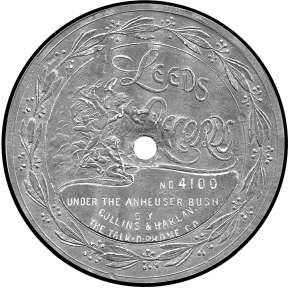

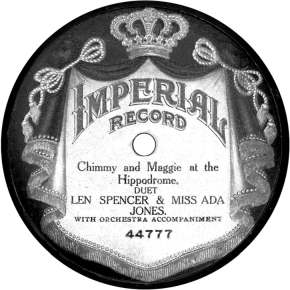
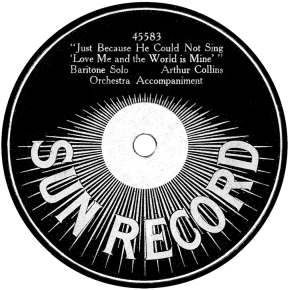
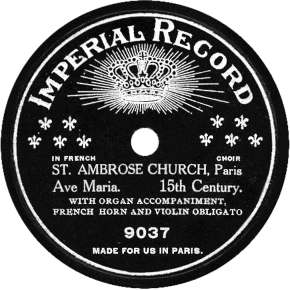
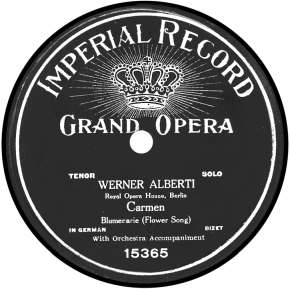
Duquesne — An extremely rare double-sided brand showing no distributor or retailer credit. Like D&R, Duquesne shows the single-face numbers for each side; however, known couplings do not match those on D&R.
Eagle — Produced by two manufacturers for the Eagle Talking Machine Company (Cleveland, Ohio). This company was affiliated with the Globe Talking Machine Company (also of Cleveland), which marketed Talk-O-Phone phonographs under the Eagle brand; decals on these machines use the same design as Eagle record labels. The International Record Company (Excelsior, International Record, et al.) manufactured what is apparently the earlier, and more crudely produced, of the two series. Leeds’ series used the same label design as the IRC products, but much more professionally lithographed in full color. Leeds’ issues use catalog numbers identical to those of corresponding Imperial releases, minus 30000 (e.g., Imperial 45252 = Eagle 15252).
Imperial — First advertised in the June 1905 Talking Machine World, Imperial soon supplanted the foil-label Leeds Records as Leeds & Catlin’s flagship brand. They originally retailed for $1 each but were reduced to 60¢ in December 1905, coinciding with discontinuation of the foil-label line. Imperial’s catalog numbering system continued that of the Leeds foil-labeled discs, with 40000 added to Leeds’ base number (e.g., Leeds 4438 = Imperial 44438). The discs were widely exported to England beginning in the spring of 1906. In October 1907, Sun replaced Imperial as Leeds & Catlin’s flagship domestic brand. However, Leeds continued to produce Imperial records for export to England, reportedly in very large quantities. New Imperial releases continued to appear regularly in the British trade-journal advance lists, but not in their American counterparts. Although Imperial records were still being advertised by British dealers in 1909, it is uncertain whether any were manufactured after Leeds & Catlin began producing double-sided pressings.
Imperial Record Grand Opera — Announced in June 1906, this was Leeds’ first and only attempt at a premium-priced line, retailing for $1.50 for the red-label series. A companion black-label line, employing less-stellar talent and lacking the Grand Opera designation, retailed for $1. All known issues were recorded in various European cities by Schallplatten Fabrik “Favorite” GmbH (Hannover, Germany). Although some labels state, “Made for Us,” the records were simply reissues of material originally released on the Favorite label. Catalog numbers are identical to those of the corresponding Favorite records, minus that company’s various prefixes. The records are rare today.
Leeds Records — Leeds & Catlin’s original disc line, distinguished by florid, embossed-foil labels. Seven-inch discs, very few of which are known, were advertised for the 1903 Christmas holiday trade; ten-inch were first listed in early 1904, although it is likely that some were recorded in late 1903. Leeds discs initially bore the imprint of the Ohio Talking Machine Company (rarely seen today), then that of its successor, the Talk-O-Phone Company (commonly seen), which marketed the discs in conjunction with Talk-O-Phone phonographs. The imprint was removed at the end of 1904, after Talk-O-Phone introduced its own line of records. Most labels are imitation-gold foil, but metallic green was also used on occasion, and pressings are known that have no foil at all over the impressed bas-relief. The label was phased out beginning in mid-1905, in favor of Imperial, and was discontinued at the beginning of 1906.
Nassau —A budget-priced line manufactured for R. H. Macy & Company’s New York department store. They were announced in early December 1907 as single-sided discs retailing for 39¢, leading The Talking Machine World to correctly predict “a legal scrap on patent grounds...invited by this bold step into the boasted territory of prohibited prices.” Macy’s sometimes gave the records away with the purchase of a phonograph. The records were numbered in several series, which changed frequently. The earliest series used unprefixed numbers corresponding to Imperial’s catalog numbers, minus 20000 (e.g., Imperial 45681 = Nassau 25681). The first B-prefixed catalog series, introduced in later 1907, used catalog corresponding to Imperial’s, minus 40000 (e.g., Imperial 45222 = Nassau B-5222). A second B- prefixed series, using one- and two-digit numbers that do not correspond to Imperial’s numbers, was introduced in January 1908. A C-prefixed series, also using one- and two-digit catalog numbers that do not correspond to Imperial’s, was first advertised in the Fall of 1908. The C- series was soon replaced by a double-sided D- prefixed series. Several other department stores, including Abraham & Straus, sold Nassau records from time to time, and they were also exported to England. In June 1909, Victor obtained an injunction preventing Macy’s from selling the records.

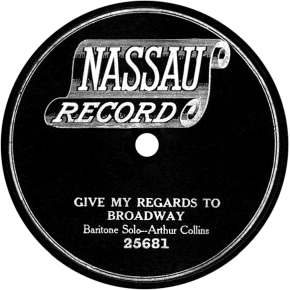
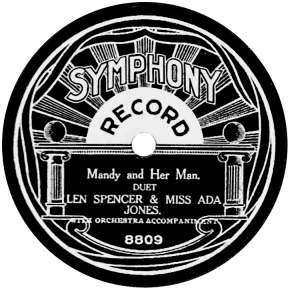
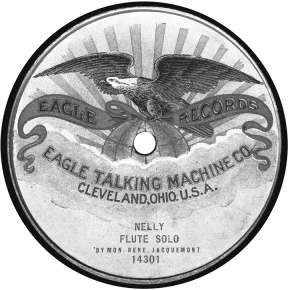
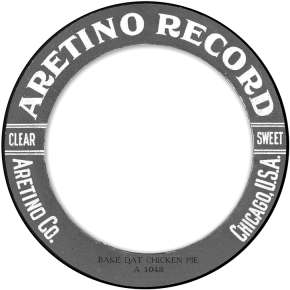
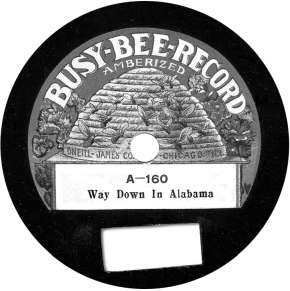
National — A double-sided brand manufactured for an unknown distributor or retailer. The few known releases use the same catalog numbers as Leeds’ corresponding Peerless issues.
Oxford — Sears, Roebuck & Company’s “house” brand, Oxford was introduced in the autumn of 1906, as a replacement for the Harvard label, and initially was produced by Columbia. In 1907 production shifted to Leeds & Catlin, which manufactured Oxford discs in 7"and 10" series. The 7"discs were numbered in a 16000 series and used masters that apparently were recorded especially for Sears, as Leeds was not producing its own 7" discs by that time. A few of the 7" masters also appeared on Busy Bee. Leeds & Catlin’s 10" Oxford catalog numbers correspond to those on Imperial, minus 33000 (e.g., Oxford 11690 = Imperial 44690), sometimes with the addition in the wax of a discographically insignificant 11- prefix. Production reverted to Columbia in 1908, passed to Zonophone in 1909 (including a few rare pressings from obsolete 7" Victor masters), then returned to Columbia in 1911. Leeds & Catlin’s Oxford 10" Oxford pressings are fairly scarce, and their 7" Oxford pressings are rare.
Peerless — Leeds’ flagship double-sided brand was first advertised in February 1909, by which time it had probably been in production for several months. The Peerless brand name was also used on vacuum cleaners and other household goods sold by the Manufacturers’ Outlet Company (89 Chambers Street, New York), which became Leeds & Catlin’s distributor in early 1909. Peerless records retailed for 65¢ each and carried Leeds’ usual notice that they were sold only on mechanical-feed machines or as replacements for broken records. Early issues are couplings of Leeds masters that had previously been issued on Imperial, Sun, and related labels. Later issues include material that appeared only in double-sided form, some of which do not show corresponding single-sided catalog numbers. The last known listing appeared in the April 1909 Talking Machine World. The records are relatively rare today.
Silver Star — Produced for an unknown distributor or retailer c. 1904–1906. The B- prefixed catalog numbers are identical to those of corresponding Leeds Records (e.g., Silver Star B 4048 = Leeds 4048). The highest-numbered issues correspond to August 1906 Imperial releases. The International Record Company (Excelsior, International Record, et al.) also produced Silver Star discs, which are easily distinguished by their lack of the B prefix and any markings in the wax.
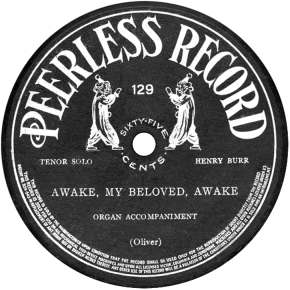



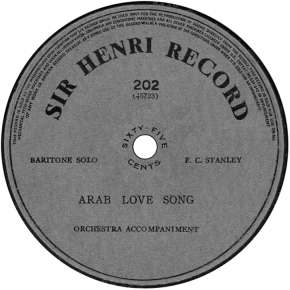
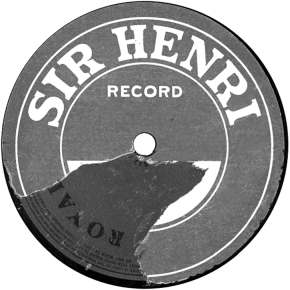
Sir Henri — Produced by several manufacturers for the Simpson-Crawford Company, a New York department store. The International Record Company (Excelsior, International Record, et al.) produced the earliest series; Leeds & Catlin took over production after IRC suspended operations in mid-1907. Leeds produced several different catalog series, all known examples of which correspond to Imperial catalog numbers in the last four digits (e.g., Imperial 45221 = Sir Henri 25221). The final Leeds-produced series was double-sided and used the same three-digit catalog numbers as Peerless. In 1910, Columbia sold a quantity of Leeds-produced discs that it had relabeled as Sir Henri discs to Simpson- Crawford, resulting in a lawsuit by Victor for selling infringing merchandise (see Introduction, p. xxii). In its final incarnation, Sir Henri consisted of nothing more than surplus single-sided Columbia or Star pressings with Sir Henri labels pasted over the originals.
Sun — Sun replaced Imperial as Leeds’ flagship brand in late 1907. The first known advertisements for Sun appeared in September of that year, and the first catalog was published a month later. (Imperial remained in production after Sun’s introduction, as an export label). Sun’s label design was reworked at some point; originally, the rays extended fully to the top of the label, overlapping the title and artist credits. Sun’s catalog numbering continued that of Imperial, which had continued the original Leeds series with the addition of 40000 (e.g., Sun 44663 = Imperial 44663 = Leeds 4663). Early releases included reissues of many Leeds foil-label–period recordings.
Symphony — Manufactured c. 1907–1909 for an unknown distributor or retailer. The label appears to have been introduced at about the same time as Leeds’ Sun brand, based on the lowest known catalog numbers, and it was produced in both single- and double-sided form. Catalog numbers on single-sided issues correspond to those of Imperial and other Leeds products in the last four digits (e.g., Imperial 41505 = Symphony 21505). An rare alternate label design, with sunburst motif, uses four-digit catalog numbers that correspond to Imperial in the last three digits (e.g., Symphony 8809 = Imperial 44089). Double-sided pressings, with a very plain label design lacking any graphic decoration, use three-digit catalog numbers that are identical to those on Peerless. On these issues, the original Imperial single-sided catalog numbers are also shown on the labels, in parentheses.
20th Century Record — A double-sided disc produced for an unknown distributor or retailer. Like D&R, the 20th Century labels show the original Imperial single-face catalog numbers on each side. The records are rare.
Vim — Produced by two companies for the Vim Company (Chicago). Vim operated a general-merchandise house that was sued by Columbia and Victor for illegal price-cutting, probably providing the incentive for the company to introduce its own label. The apparently short-lived V- prefixed series was produced by Leeds & Catlin. One example of a Vim issue using the corresponding Imperial catalog number has been confirmed. The slightly less rare X- prefixed series was manufactured by the International Record Company.
Labels scans from the collections of Allan Sutton (AS), David Giovannoni (DS), and Kurt Nauck (KN)
